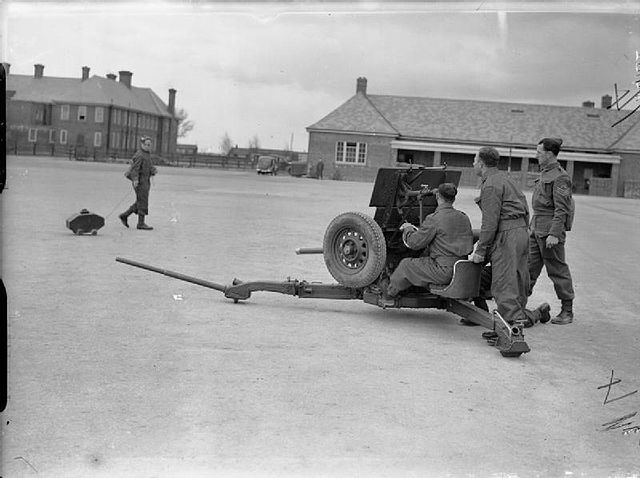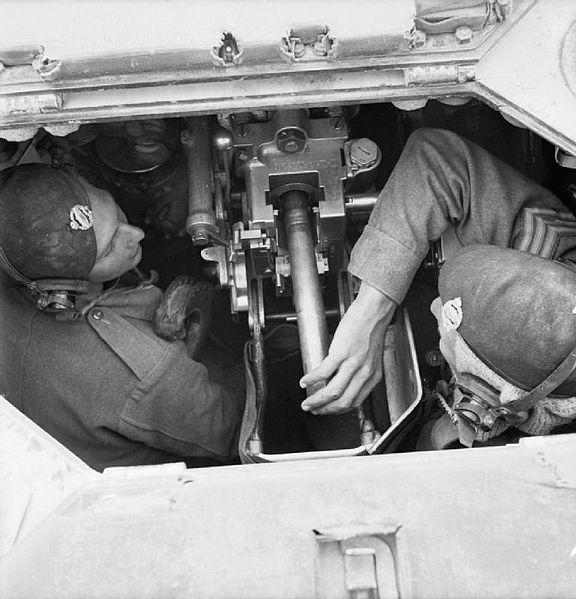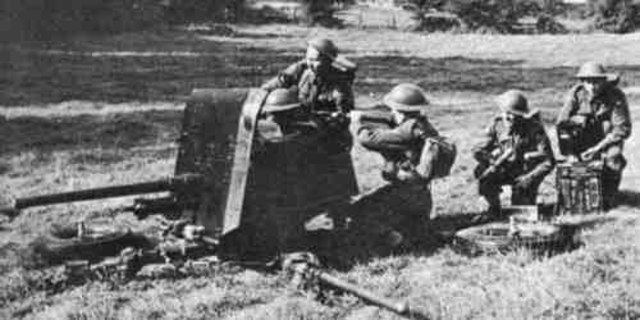An anti-tank gun is a form of artillery designed to destroy tanks and other armoured fighting vehicles, normally from a static defensive position. The development of specialized anti-tank munitions and anti-tank guns was prompted by the appearance of tanks during World War I. To destroy hostile tanks, artillerymen often used field guns depressed to fire directly at their targets, but this practice expended too much valuable ammunition and was of increasingly limited effectiveness as tank armor became thicker. The first dedicated anti-tank artillery began appearing in the 1920s, and by World War II was a common appearance in many European armies. To penetrate armor, they fired specialized ammunition from longer barrels to achieve a higher muzzle velocity than field guns. Most anti-tank guns were developed in the 1930s as improvements in tanks were noted, and nearly every major arms manufacturer produced one type or another.

French-designed DEFA D921/GT-2 90 mm towed anti-tank gun as mounted on a QF 17-pounder carriage
Two British officers with a captured Mauser 1918 T-Gewehr
German PaK 38 50-mm anti-tank gun
Postwar Soviet MT-12 100-mm anti-tank gun
The Ordnance QF 2-pounder, or simply "2 pounder gun", was a 40 mm (1.575 in) British anti-tank gun and vehicle-mounted gun employed in the Second World War.
QF 2 pounder set up for firing; the gun commander stands behind the gun and the third crewmember would fetch ammunition.
Mark I carriage, April 1941
Crew inside a Valentine tank loading the gun.
2 pounder in action with British troops. Legs are unfolded.








